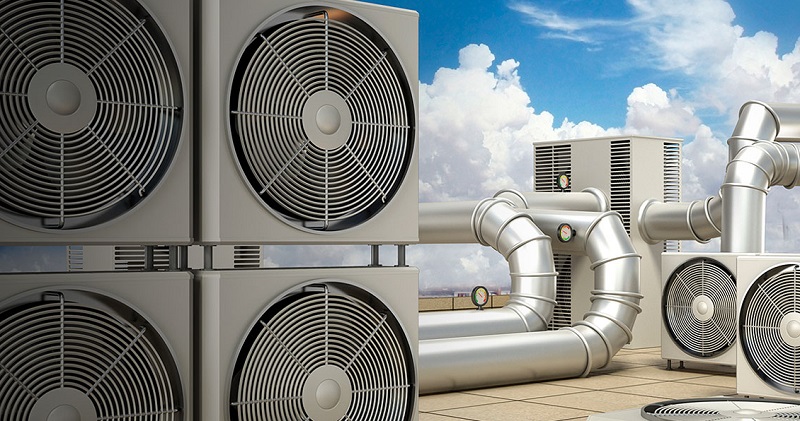BSRIA study shows US industrial refrigeration market worth US$2bn

|
Demand for industrial refrigeration systems in the US has resulted in the market being worth US$2bn in 2018, which is a 6.9% increase from 2017. This was fuelled by market drivers such as US tax cuts, increasing population and an increase in industrial construction, particularly the cold storage and warehouse segments.
BSRIA has just published a new refrigeration study providing detailed quantitative and qualitative assessment of the industrial refrigeration market in the US. This includes the cooling and refrigeration of industrial processes such as distribution, food and beverage storage, and production and energy, and consists of:
- Bare compressors
- Compressor units
- Compressor racks
- Industrial packages
- Remote condensers
- Evaporators
- Fluid-to-fluid heat exchangers
- Starters and drives
- Pressure vessels
- Refrigeration controls
- Hygienic air-handling units and
- Compressor motors.
Because of tariffs levied by the US Government on steel and aluminium which have affected the cost of components, manufacturers increased their pricing in 2017-2018. Added to this, stringent regulations against HCFCs and HFC refrigerants have seen users retrofitting their old equipment with alternative refrigerants or natural refrigerants such as ammonia or CO2.
In a competitive landscape, Johnson Controls, Emerson, GEA and Mayekawa remain some of the large players, thanks to their extensive product ranges, including compressors, compressor units to packages, controls and heat exchangers.
Contracting companies also have an important role to play when it comes to industrial refrigeration as the equipment in this industry is custom made. As well as the traditional companies working in the commercial refrigeration market, new international entrants have entered the light industrial sector in the last few years with products which include compressor units, racks and packages.
Overall, the outlook for the market remains positive in the short term given the state of the economy and the growth in industrial spending. The market is forecast to increase to US$2.2bn by 2023. The economy is expected to slow down compared to 2018, but will still show decent growth as revenue received from the equipment will grow faster than the number of units sold.
BSRIA’s unrivalled study combines market forecasts methodology and analysis of proprietary data. Interviews with suppliers and the channel remain the core source to assesses the current situation.
[edit] About this article
This article first appeared in September 2019 on the BSRIA website and can be accessed HERE. To find out more about the study, call BSRIA on 01344 465 540 or email wmi@bsria.co.uk.
BSRIA is a non-profit distributing, member-based association, providing specialist services in construction and building services. More information at www.bsria.co.uk.
BSRIA Test is a leading UK independent laboratory for testing, validation and performance of HVAC products and systems. As a UKAS (1053)-accredited laboratory to ISO 17025 with over 60 years' experience, it offers standard testing to BS, EN and ISO for CE approval and compliance with local schemes and global markets.
BSRIA's Worldwide Market Intelligence (WMI) division is a leading provider of a regularly released authoritative portfolio of published market reports and hot topics, in addition to bespoke studies and management consultancy. A wide range of off-the-shelf solutions includes HVAC, energy service and smart homes, renewable technology, refrigeration, structured cabling, lighting, security, fire detection and building controls.
BSRIA WMI also offers a market consultancy to the building and HVAC&R market stakeholders, building on its comprehensive data base of information, its expertise of the market’s competitive environment, its technical knowledge and analytical power.
[edit] Related articles on Designing Buildings Wiki
- Absorption refrigeration.
- Air conditioning in non-domestic buildings.
- Air conditioning inspection (energy performance regulations).
- Air conditioning inspection procedure.
- Air handling unit.
- BREEAM Impact of refrigerants.
- BSRIA articles on Designing Buildings Wiki.
- Building Automation and Control System BACS.
- Chilled beam.
- Chiller units.
- Chilled water.
- Cooling systems for buildings.
- COVID-19 and the US HVAC sector.
- Ductwork.
- Evaporative cooling.
- Fan coil unit.
- Fresh air.
- Heat recovery.
- How to Use Your Air Conditioning Energy Assessments to Reduce Energy Costs.
- Humidity.
- HVAC.
- Refrigerants.
- Stale air.
- Thermal comfort.
- Variable air volume VAV.
- Variable refrigerant flow VRF.
- Workplace air conditioning.
--BSRIA
Featured articles and news
Gregor Harvie argues that AI is state-sanctioned theft of IP.
Preserving, waterproofing and decorating buildings.
Many resources for visitors aswell as new features for members.
Using technology to empower communities
The Community data platform; capturing the DNA of a place and fostering participation, for better design.
Heat pump and wind turbine sound calculations for PDRs
MCS publish updated sound calculation standards for permitted development installations.
Homes England creates largest housing-led site in the North
Successful, 34 hectare land acquisition with the residential allocation now completed.
Scottish apprenticeship training proposals
General support although better accountability and transparency is sought.
The history of building regulations
A story of belated action in response to crisis.
Moisture, fire safety and emerging trends in living walls
How wet is your wall?
Current policy explained and newly published consultation by the UK and Welsh Governments.
British architecture 1919–39. Book review.
Conservation of listed prefabs in Moseley.
Energy industry calls for urgent reform.
Heritage staff wellbeing at work survey.
A five minute introduction.
50th Golden anniversary ECA Edmundson apprentice award
Showcasing the very best electrotechnical and engineering services for half a century.
Welsh government consults on HRBs and reg changes
Seeking feedback on a new regulatory regime and a broad range of issues.
























